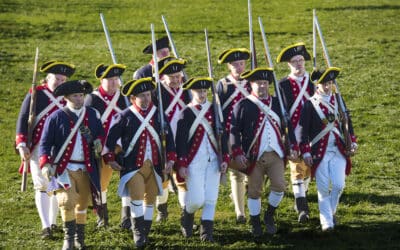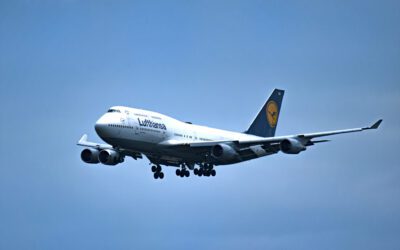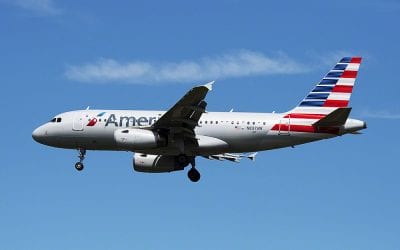I’m sure you’ve been reading about the appallingly long security lines at TSA (Transportation Security Administration) security checkpoints at many airports across the U.S. Last week, passengers reported it took as long as 2½ hours to get through security at Chicago’s O’Hare International Airport, and two hours at Atlanta’s Hartsfield-Jackson International Airport.
In a letter to TSA, the Port Authority of New York and New Jersey demanded TSA add more staff to reduce security wait times, explaining that from mid-March through mid-April, their passengers at Newark Liberty International, John F. Kennedy International and LaGuardia Airports waited more than 20 minutes to get through airport security, sometimes almost an hour.
Without major changes at TSA airport security checkpoints, it’s hard to imagine that the long security lines will be shortened any time soon.
Several major issues have combined to cause the long lines at TSA security checkpoints this spring, as we head into the U.S.’ major summer vacation period.
TSA security checkpoint staffing cuts certainly top the list. As of fiscal 2016, TSA’s authorized staffing dropped to 42,525, while air traveler volume is expected to hit 740 million passengers. Since 2013, that’s a 15 percent increase in air passenger volume, while TSA’s staffing dropped by 10 percent.
Testifying before Congress earlier this month, TSA Administrator, Peter Neffenger, said, “When I came into this organization last year, I found an organization with 5,800 fewer screeners and it had fewer front-line officers than it had four years previously.”
Some in Congress believe that checked luggage fees have exacerbated security checkpoint problems by pushing passengers to bring more carry-on bags than ever. While there is some truth to the assertion, as I pointed out last week in my column, Senators’ luggage fee suggestion won’t work to shorten TSA lines, it’s not a major contributor to the situation.
The major issues driving the high quantity of carry-on luggage used by air travelers include avoiding lengthy baggage claim waits, needing essentials while aloft, airline liability limits, including refusing all liability for valuables and breakables, and concern that checked luggage will be lost, stolen or damaged. These issues will remain for the foreseeable future.
In a press release about the Port Authority of New York and New Jersey’s airports, TSA blamed passengers for having a part in the long security lines. They claim that many passengers bring more than a carry-on and personal item through their security checkpoints, bogging down their lines. There is no evidence that there has been an increase in the few passengers who try to sneak an extra carry-on onto their plane.
Some passengers are unprepared and don’t understand TSA’s luggage rules, especially the liquids’ limitations. That slows down lines, but that’s been the case for years.
There is no new passenger carry-on luggage behavior which could account for even a small part of the the significant uptick in security line wait times being experienced this spring.
I think Global Gateway Alliance chairman Joseph Sitt got it right when he said, “Blaming passengers won’t solve the problem of unconscionably long security lines at our airports.”
TSA has to forget the “blame game” and get to work. I’ve got three tasks TSA can start today to help alleviate security check wait times.
1. TSA must hire and train new staff members (or reassign the current workers) at once and convince Congress to return the $13 billion in funding that was syphoned off to cut the budget deficit. Too often, air travelers find closed security checkpoint lines due to staffing shortages, while long security lines and wait times lengthen.
TSA is getting some immediate help. Delta and American Airlines will assign some of their airport employees to relieve TSA staff from performing non-screening functions at their checkpoints. American Airlines pledged $4 million to provide new staff members for TSA.
In addition, TSA received congressional approval to reallocate $34 million of its budget to increase staff at airports. About $26 million will pay for additional hours by current staff. Eight million will allow TSA to hire 768 new staff members by the end of May. While this is helpful, it’s just a short term fix. Congress needs to fund TSA staffing at appropriate levels, long term.
2. TSA needs a crash program to redesign their security checkpoints. Efficiency needs to be significantly increased. TSA is getting help to do this from Delta Airlines in Atlanta. Later this month, two redesigned checkpoint lanes will open there. TSA must quickly expand redesigned checkpoints across the U.S.
3. TSA must immediately begin to better publicize their “TSA Pre?®” program. Whether or not we like the program, as more passengers fill TSA Pre?® lanes at security checkpoints, the standard lines will shorten, speeding up everyone through security. TSA should immediately consider temporarily decreasing the cost to apply for program membership, at least until the current crisis is over.
There aren’t any easy fixes that will shorten the lines at U.S. Airports by the Memorial Day holiday, but by late summer these changes could begin to make a difference for air travelers. Over the long run, however, TSA needs to rethink their entire operation at airports. It’s inefficient, and far more security theater than real security.
(Image: Denver Airport, TSA Security, Copyright 2009 Dan Paluska)
After many years working in corporate America as a chemical engineer, executive and eventually CFO of a multinational manufacturer, Ned founded a tech consulting company and later restarted NSL Photography, his photography business. Before entering the corporate world, Ned worked as a Public Health Engineer for the Philadelphia Department of Public Health. As a well known corporate, travel and wildlife photographer, Ned travels the world writing about travel and photography, as well as running photography workshops, seminars and photowalks. Visit Ned’s Photography Blog and Galleries.



